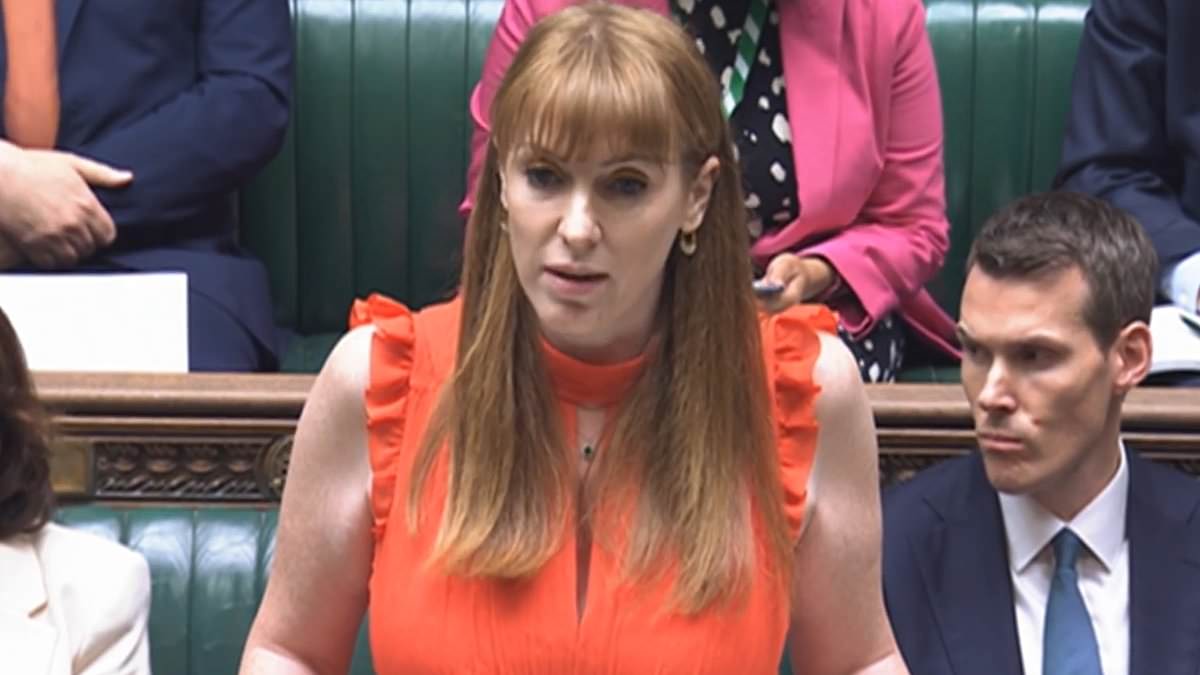Angela Rayner today unveiled a ‘radical’ shake-up of planning laws as she announced the most unaffordable areas will be required to build a higher number of new homes.
In a statement to the House of Commons, the Deputy Prime Minister confirmed Labour would revive top-down housebuilding targets for local councils.
She revealed the collective total for these local targets would be just over 370,000 homes a year – as the Government bids to meet its promise to deliver 1.5million new homes over the next five years.
Ms Rayner, who also is the Housing, Communities and Local Government Secretary, told MPs a new method for determining local housebuilding targets would include ‘an uplift where house prices are most out of step with local incomes’.
This is likely to see vast swathes of the South East, where property prices are highest, being ordered to deliver more homes than other parts of England.
The Government is prepared to ‘step in’ and take over an authority’s local plan in order to ‘drive progress’, the Ministry of Housing, Communities and Local Government warned.
This would ensure local communities ‘get a say on how, but not if, homes are built’, it added.
In her Commons statement, Ms Rayner also set out Labour’s plan to release parts of the protected green belt for development.
These ‘low quality’ areas will be rebranded ‘grey belt’ and include land on the edge of existing housing or roads, as well as disused petrol stations and car parks.
The Deputy PM told MPs there were ‘simply not enough homes’ as she blasted the previous Tory government’s record on housebuilding.
‘They failed to get anywhere near their target 300,000 homes a year and, in a bid to appease their anti-housing backbenchers, they made housing targets only advisable,’ she said.
‘They knew that this would tank housing supply, but they still did it. And as I stand here today, I can now reveal the result.
‘That the number of new homes is now likely to drop below 200,000 this year – unforgivable.’
She added: ‘Decisions about what to build should reflect local views… well, that should be about how to deliver new homes, not whether to.
‘Whilst the previous government watered down housing targets, caving into their anti-growth backbenchers, this Labour Government is taking the tough choices putting people and country first.
‘For the first time we will make local housing targets mandatory, requiring local authorities to use the same method to work out how many homes to build. But that alone is insufficient to meet our ambition, so we’re also changing the standard method used to calculate housing need so it better reflects the urgency of supply for local areas.
‘Rather than relying on outdated data, this new method will require local authorities to plan for homes proportionate to the size of existing communities, and it will incorporate an uplift where house prices are most out of step with local incomes.
‘The collective total of these local targets will therefore rise from some 300,000 a year to just over 370,000 a year.’
Ms Rayner’s reforms make explicit that the default answer to brownfield development should be ‘yes’ and promote homebuilding at greater densities in urban centres, like towns and cities.
But because there is not enough brownfield land in the country to meet housing needs, the Government will allow the targeted release of so-called grey belt land, which includes disused petrol stations and car parks on parts of protected land known as the green belt.
Any green belt land released will be subject to ‘golden rules’ to ensure the development delivers 50 per cent affordable homes and has access to green spaces and infrastructure such as schools and GP surgeries.
The method for local authorities to calculate how much land they must allocate for new housing, which relied on data from 2014, will be updated to ensure stock is boosted in every part of the country.
Ministers are also laying the groundwork for universal local plan coverage across England.
With only a third of councils currently having a plan that is under five years old, ministers will be ready to intervene to ensure they all have one in place by a specified point next year, taking over a local plan if insufficient progress is made.
Ms Rayner also unveiled immediate measures to counter the decline in the number of social and affordable housing through new flexibilities for councils, including allowing them to use their right-to-buy receipts to build and buy more social homes.
‘Today I’m calling on local authorities, housing associations and industry to work with me to deliver a council house revolution,’ Ms Rayner told the Commons, promising the ‘biggest boost to social and affordable housing in a generation’.
Details of Government investment in the form of direct grant funding for social and affordable housing, as well as on rent stability, will be brought forward at the autumn spending review.
Labour also intends to drop the requirement for new homes to be ‘beautiful’, introduced by the Conservatives, arguing it is subjective, difficult to define and leads to inconsistent decision-making on applications.
The ruling party’s manifesto used different language, outlining instead its aim for ‘exemplary’ development to be ‘the norm not the exception’.
The new draft National Planning Policy Framework, which sets out planning policies for England, will go out to consultation for eight weeks from Tuesday.
